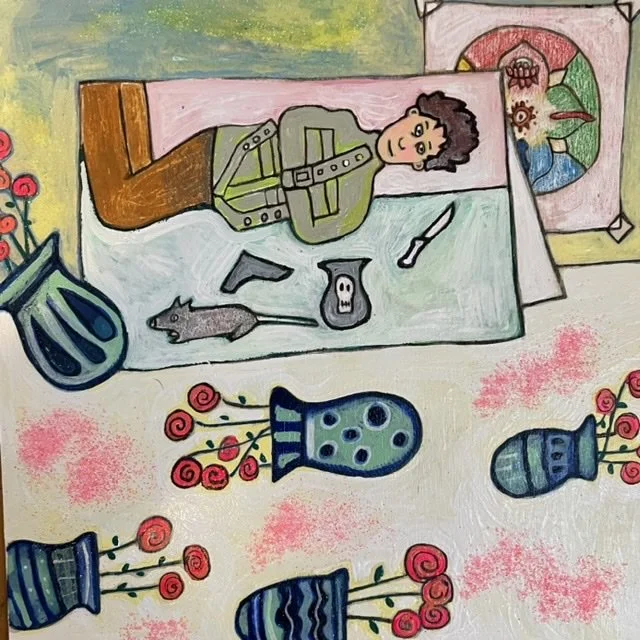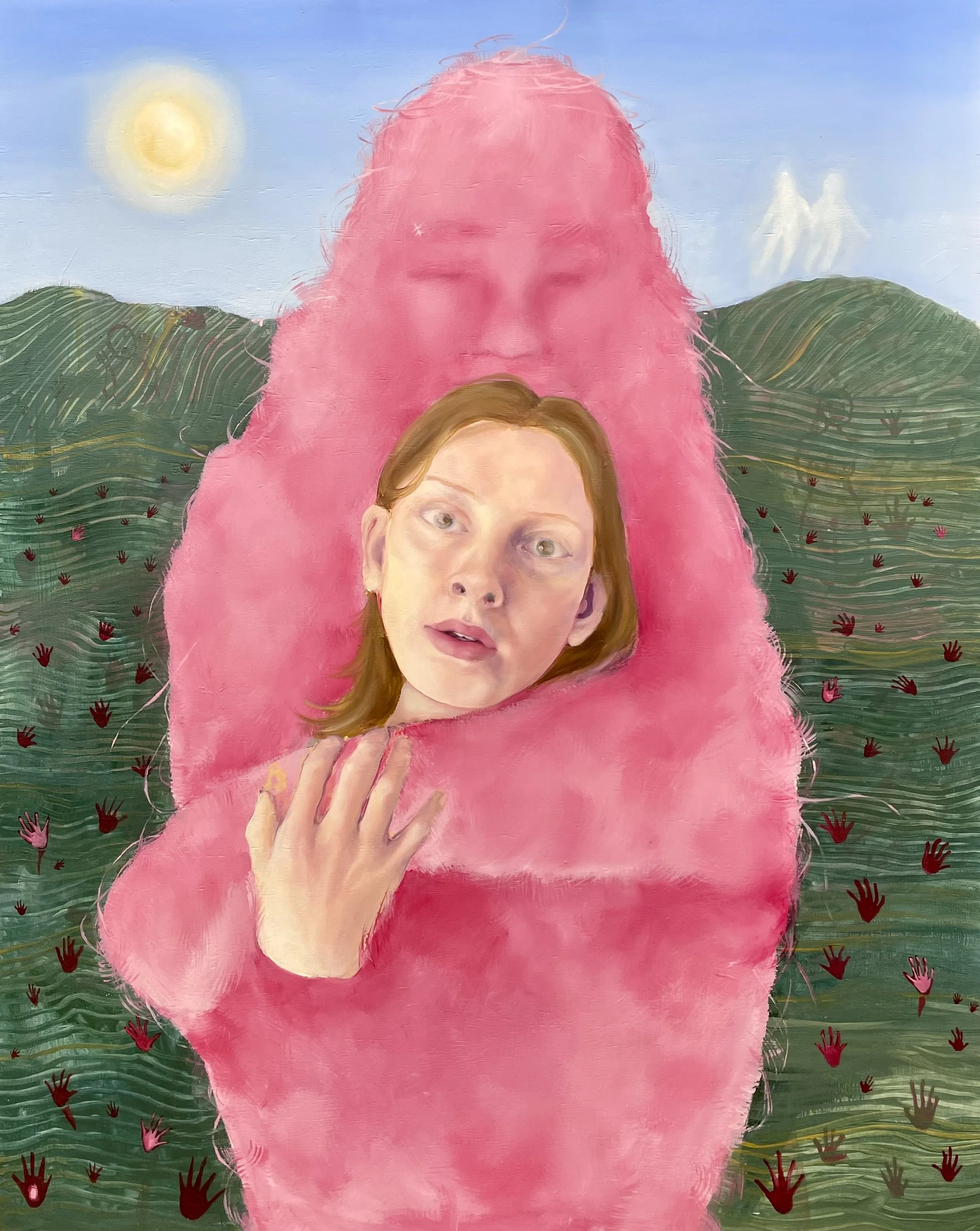OUR ARTISTS
-

LIZ SCHEER
Galerie Shibumi is pleased to announce the gallery's representation of painter Liz Scheer (b. Texas, 1990). The artist will be the subject of a solo exhibition at the gallery in New York this fall.
Buddhist teacher Dzongsar Khyentse Rinpoche has said that a knife becomes sharp as the result of "two exhaustions"--the exhaustion of the sharpening stone and the exhaustion of the metal. In the same way, he continues, "enlightenment is the result of the exhaustion of obscurations and the exhaustion of the antidote of obscurations." Liz Scheer sharpens the knife of her 'painting-poems' by rubbing together two disparate narratives (one visual and one verbal) that have respectively 'maxed out' their claims to reality. By pairing small jewel-toned paintings with patches of fiction pulled from a nonexistent ur-text, Scheer's work portrays the unexpected clarity that arises in moments of spiritual depletion. Through its uncanny iconography born from New Age paraphernalia and the culture of New England and the Midwest, Scheer's work portrays a kind of quotidian transcendence suffused with poignancy and humor.
-

JOSIE GIRAND
Galerie Shibumi is pleased to announce the gallery's representation of painter Josie Girand. The artist will be the subject of a solo exhibition at the gallery in New York this fall.
Josie Girand is an oil painter from New York. She graduated from Kenyon College, where she studied studio art and philosophy and discovered her love of painting. Her paintings explore themes of isolation, existential dread, and girlhood, with elements of surrealism and magical realism. She currently works as a children’s art teacher and maintains an independent painting practice.
-

ARI KIM
Galerie Shibumi is pleased to announce the gallery's representation of painter and filmmaker Ari Kim.
Invisible threads of fate weave through all living beings, connecting them in ways both seen and unseen, across lifetimes and moments. Ari Kim's work explores this intricate web of connections known as "In-Yeon (인연)," a concept deeply rooted in the idea of fate or providence. In-Yeon speaks to the invisible lines and knots that bind all living creatures, transcending time and space. These connections are not limited to lovers or family; they extend to friends, strangers, and even fleeting encounters on a subway.
Ari’s current series, “Mae-Deup (매듭),” delves into the profound connection between two figures who could be a young mother and daughter or perhaps a larger self and its younger counterpart. "Mae-Deup (매듭)," which translates to "knot" in English, refers to the traditional Korean art of decorative knotting, symbolizing the bonds or connections that tie us together. In these works, the figures’ braided hair, reminiscent of an umbilical cord, emphasizes this connection. Historically in Korea, hair was considered a sacred gift from ancestors, to be cherished and protected—adding layers of meaning to the imagery of hair as a navel string.
The figures in Ari’s paintings engage in acts of service, quietly expressing love through small, tender gestures. Whether it’s napping on a loved one’s knees, creating a shadow to shield them from the sun, or gently plucking white hairs with care, these moments replace direct words of affection. Through her art, Ari seeks to unveil forgotten memories, subtly capturing moments that once existed. She refers to these moments as "creases"—the gentle folds of time that bear witness to past gestures.
When light touches these creases, it casts a shadow, revealing the trace of what once was. This shadow, this delicate interplay of light and memory, forms the essence of Ari’s work. Each piece explores the enduring and often unseen connections that shape our lives, a visual narrative of the bonds that weave us together across lifetimes.